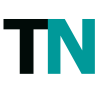Someone who abuses drugs uses a substance too much, too frequently, or in otherwise unhealthy ways. If someone you love is experiencing a substance use disorder, please bear in mind that they have a chronic illness and need support and help. Learning about addiction and how not to enable a person is one way you can help them. Having the ongoing support of loved ones and access to professionals can make all the difference. Medication can be an effective part of a larger treatment plan for people who have nicotine use disorder, alcohol use disorder, or opioid use disorder. They can be used to help control drug cravings, relieve symptoms of withdrawal, and to help prevent relapses.
Drug addiction, also known as substance use disorder, is a disease that affects a person’s brain and behavior and leads to an inability to control the use of a legal or illegal drug or medication. When you’re addicted, you may continue using the drug despite the harm it causes. Many people don’t understand why or how other people become addicted to drugs. They may mistakenly think that those who use drugs lack moral principles or willpower and that they could stop their drug use simply by choosing to.
An intervention is an organized effort to intervene in a person’s addiction by discussing how their drinking, drug use, or addiction-related behavior has affected everyone around them. For example, a person withdrawing from alcohol can experience tremors (involuntary rhythmic shaking), dehydration, and increased heart rate and blood pressure. Examples include ecstasy or molly (MDMA), gamma-hydroxybutyric acid (GHB), flunitrazepam (Rohypnol ― a brand used outside the U.S. ― also called roofie) and ketamine.
How Does an Intervention Work?
Getting in trouble might feel like the end of the world, but it’s nothing compared to hurting yourself, someone else, or worse. Doing your drugs before the show (unless you’re driving!) is probably more prudent. But if you absolutely insist on bringing ’em in, you might want to invest in some stash gear… and be prepared to get your shit confiscated anyway. The podcast portion of this story was produced by Audrey Nguyen, with engineering support from Kwesi Lee. There are three ways to “bind” yourself from – or place limits on – the behavior to which you’re addicted.
- Who, when, and how that happens will vary, depending on how well you comply with all of the above, but you’ll probably be able to laugh about it a few years down the road.
- One, stop using for as long as it takes to get trace amounts out of your system (a few days for coke or amphetamines, but potentially weeks for weed).
- Intervention works by confronting the specific issues and encouraging the person to seek treatment.
Drug addiction, or substance use disorder (SUD), is when someone continues using a drug despite harmful consequences to their daily functioning, relationships, or health. Using drugs can change brain structure and functioning, particularly in areas involved in reward, stress, and self-control. These changes make it harder for people to stop using even when they really want to.
Strategies that help people stay in treatment and follow their recovery plan are essential. Along with medical and mental health treatments, the following are steps you can take to help overcome substance use disorder. As with most other chronic diseases, such as diabetes, asthma, or heart disease, treatment for drug addiction generally isn’t a cure.
Morphine, for instance, wasn’t designed by the body but can be found naturally in opium poppies. By luck it mimics the shape of the natural opioid agonists, the endorphins, that are natural pain relievers responsible for the “endorphin high”. These outside molecules bind to receptors ambien dosage on the cell, activating the receptor and generating a biochemical or electric signal inside the cell. This signal then makes the cell do certain things such as making us feel pain. But with continued use, a person’s ability to exert self-control can become seriously impaired.
Going through detox is a crucial step in recovery, and it’s these first few weeks that are arguably most critical because they are when the risk of relapse is highest. Love how Alia Janine chats w her guests on how to go drugs responsibility. Receive free access to exclusive content, a personalized homepage based on your interests, and a weekly newsletter with the topics of your choice.
This is because naloxone (marketed as Narcan) quickly occupies all the opioid receptors in the body and prevents morphine from binding to and activating them. For something that seems adderall’s effects on the brain: short-term and long-term symptoms so incredible, drug mechanics are wonderfully simple. Pleasurable experience, a burst of dopamine signals that something important is happening that needs to be remembered.
To send a message, a neuron releases a neurotransmitter into the gap (or synapse) between it and the next cell. The neurotransmitter crosses the synapse and attaches to receptors on the receiving neuron, like 10 signs that someone you know is using crack regularly a key into a lock. Other molecules called transporters recycle neurotransmitters (that is, bring them back into the neuron that released them), thereby limiting or shutting off the signal between neurons.
Substance Use Helpline
Some people may start to feel the need to take more of a drug or take it more often, even in the early stages of their drug use. Substance abuse has many potential consequences, including overdose and death. Learn about the effects of drug addiction on the mind and body and treatment options that can help.
Some commonly inhaled substances include glue, paint thinners, correction fluid, felt tip marker fluid, gasoline, cleaning fluids and household aerosol products. Due to the toxic nature of these substances, users may develop brain damage or sudden death. Around 40% of all medicinal drugs target just one superfamily of receptors – the G-protein coupled receptors.
Have a drug test contingency plan.
Due to the complex nature of any substance use disorder, other options for treatment should also include evaluation and treatment for co-occurring mental health issues such as depression and anxiety (known as dual diagnosis). Counseling gets at the core of why someone began using alcohol or drugs, and what they can do to make lasting changes. This may include cognitive behavioral therapy (CBT), in which the patient learns to recognize problematic thinking, behaviors, and patterns and establish healthier ways of coping. CBT can help someone develop stronger self-control and more effective coping strategies. Specific effects such as pain relief or euphoria happen because opioid receptors are only present in some parts of the brain and body that affect those functions.
Introducing the Human Brain
On a personal note, I know that being a beginner means being irrational. I’ve tried stupid drugs I’d never touch today, got into cars I shouldn’t have been in, done molly at a Ying Yang Twins concert in Maryland that they never even showed up to… Some pointers certainly would have helped me. But the good times and good memories far outweigh the bad ones, which is why it’s so important to pass along the basics of having a good time instead of a shitty one. Ultimately, Lembke says, this is a universal problem – not one limited to those of us struggling with the disease of addiction – that has come with living in modern life. And to restore our sanity, collectively we must rethink how to navigate a dopamine overloaded world.
Other NIDA Sites
In reality, drug addiction is a complex disease, and quitting usually takes more than good intentions or a strong will. Drugs change the brain in ways that make quitting hard, even for those who want to. Fortunately, researchers know more than ever about how drugs affect the brain and have found treatments that can help people recover from drug addiction and lead productive lives. Drug and alcohol detoxification programs prepare a person for treatment in a safe, controlled environment where withdrawal symptoms (and any physical or mental health complications) can be managed.










